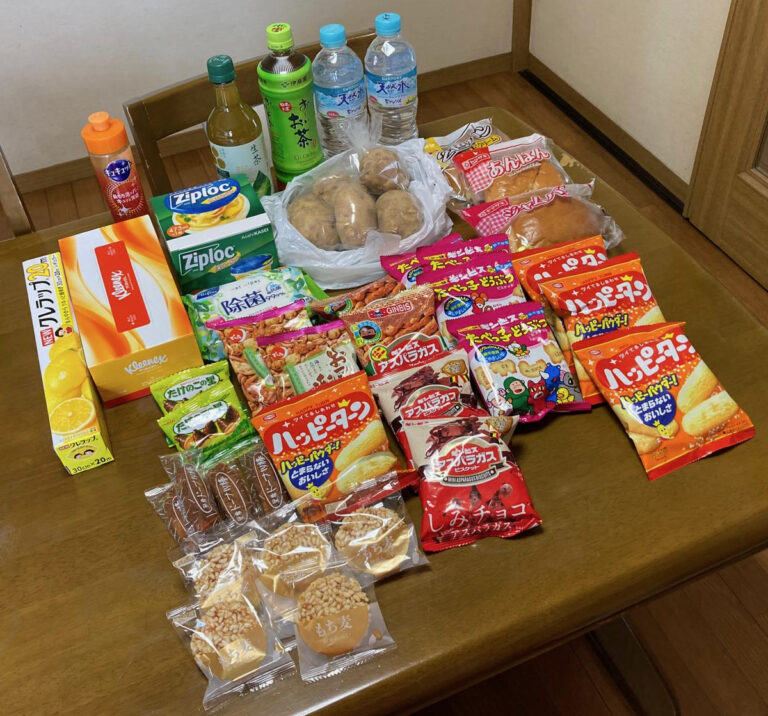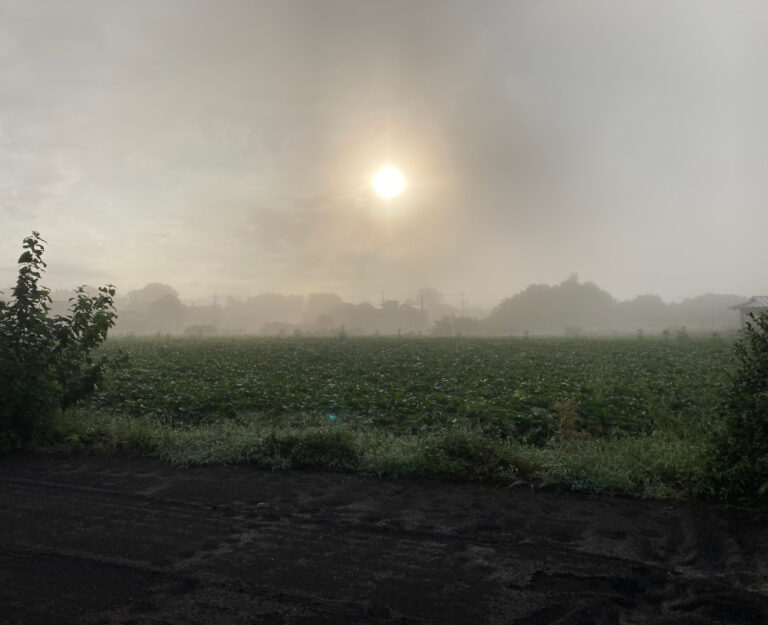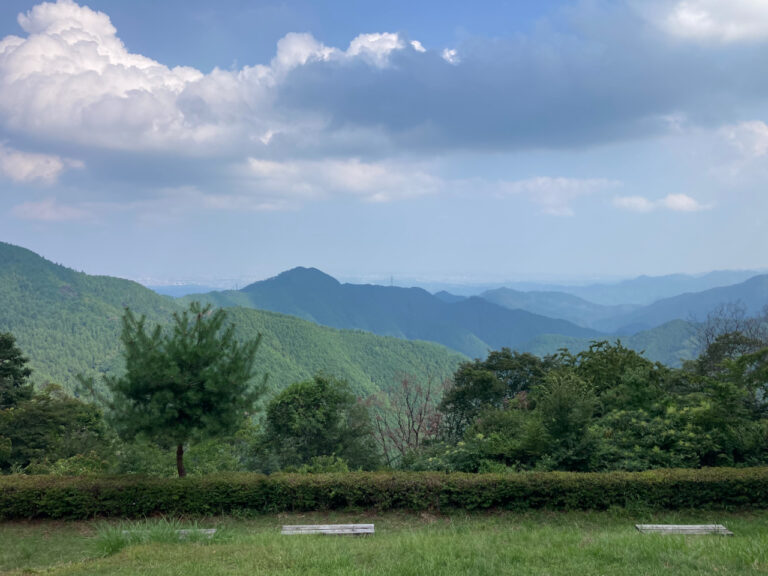The number of people concerned about hay fever is on the increase. The season for hay fever caused by cedar pollen – a condition that is often referred to as the “citizens’ illness” – is drawing near. Here we describe the hay fever mechanism and how to deal with it – measures which may be difficult to find out about at crowded ear, nose and throat clinics.
The reasons for hay fever manifesting itself are threefold: ‘genetic predisposition’, ‘environmental factors’ and ‘pollen’. Most hay fever sufferers are sensitive to cedar pollen and the number of those sufferers is on the increase. Cedar was planted all over the country as a national policy in the years after WWII, and once a cedar tree exceeds 30 years of age, it is likely to produce large amounts of pollen.
(The fact that there was an enormous increase in the number of cedar trees being planted after the war – the original intention was to use the timber to help rebuild Japan’s devastated urban areas – is common knowledge, but the ‘thirty-year rule’ explains why the hay fever epidemic occurred more recently.)
If genetic predisposition and environmental factors are both present, symptoms become apparent in the sufferer once a certain amount of pollen is released. Not only do environmental factors make it more likely for the allergy to occur, they also exacerbate it. For example:
Eating habits – high-protein and high-fat diet
Living environment – airtight living spaces
Movement towards urban living – asphalt roads and pavements (pollen tends not to settle on road surfaces and is re-dispersed)
Atmospheric pollution – exhaust fumes
In this sense, hay fever is also called an ‘illness of civillisation’. The first public warning about pollen levels – relating to ragweed – was issued in 1961, and changes in the environment brought about by modernisation cannot be overlooked as a reason for this.
Pie chart – proportion of natural to man-made forestation in Japan:
Total forested area – 25,100,000 hectares
Natural forestation – 53% (13,380,000 hectares)
Man-made forestation – 41% (10,350,000 hectares)
Of which: 18% cedar (4,500,000 hectares), 10% cypress (2,600,000 hectares) and 13% other tree varieties (3,250,000 hectares)
Others – 6% (1,370,000 hectares)
The area covered by artificial cedar and cypress forests takes up around 19% of the total Japanese land mass – approximately 7,100,000 hectares. Six prefectures in Kanto (Tokyo, Saitama, Kanagawa, Chiba, Gunma, Tochigi and Ibaraki) and four prefectures in central Japan (Aichi, Gifu, Shizuoka and Nagano) have particularly extensive cedar and cypress forestation.
(Japan’s population is highly concentrated in urban areas, and it’s estimated that between 80 and 90% of the total land mass is mountainous, with most of that being forested. That more than 40% of that area was replaced with man-made forestation in the space of a few decades is an extraordinary statistic.)
Graph – Age of trees in artificial forests
Between 700,000 and 800,000 hectares of man-made forests are occupied by cedar between 41 and 45 years old, while fewer than 100,000 hectares of cedar are between 76 and 80 years old, and fewer than 50,000 hectares of cedar are between 1 and 5 years old.
Between 3 and 400,000 hectares of cypress are between 36 and 40 years old, with similar proportions to cedar for 76-80 and 1-to-5-year-old cypress.
(In other words, there’s a big spike in the graph for trees that hit their pollen-releasing prime in the past couple of decades.)
Over the past fifteen years, there has been a large increase in cedar pollen in years when the previous summer was extremely hot. In metropolitan Tokyo, the longest sunshine hours during that period – 300-plus in 2004 – were followed by the highest pollen count – 10,000 parts per cm² in 2005. Because of this, indications show that global warming is also influencing pollen levels, and therefore hay fever.
(These are statistics that I can vouch for through personal experience – ie. summer 2004 in Tokyo was stiflingly hot, and my hay fever in the spring of 2005 was even worse than usual.)
According to the results of a survey carried out with patients at ear, nose and throat clinics, the estimated number of sufferers countrywide stood at 29.8% in 2008. Of those, 26.5% were allergic to cedar pollen – around one in four people.
The estimated number of hay fever sufferers among Tokyo residents is currently at 28.2%, or around one in every 3.5 people. This is about three times greater than it was 20 years ago, and 1.5 times greater than it was 10 years ago
Depending on the influence of wind direction and topography, in areas where pollen is easily dispersed there is a tendency for the number of suffers to increase.
The rate is highest in Kanto (Tokyo, Kanagawa, Chiba, Saitama, Ibaraki, Tochigi and Gunma prefectures) and Tokai (Aichi, Gifu, Mie and Shizuoka prefectures)
Highest percentage of sufferers – Yamanashi 48.7%
Lowest percentage of sufferers – Kagoshima 12.7%
Percentage of sufferers in Ibaraki – 28.2%
Spreading from east to west, the hay fever season starts at the beginning of February in the west of Kyushu, in the middle of February in Tokyo, and at the end of March in Hokkaido.
It is currently popular to go on ‘pollen avoidance tours’ to places like Hokkaido and Okinawa.
(This isn’t as ludicrous an idea as it might sound – when my hay fever was at its worst in my mid-twenties, I spent a couple of summers in North America for the same reason.)
Regarding radioactive cesium in cedar pollen after the nuclear accident in Fukushima, in January this year, university researchers began a factual investigation at 11 locations in Kanto and Tohoku, and the Forestry Agency has said, ‘there is no effect on the human body’.
(In Ibaraki at least, fallen leaves have registered the highest levels of radioactivity, although as yet I haven’t seen any statistics for radiation levels in pollen – presumably because the season has only just started. Make of the Agency’s statement what you will!)
Cedar registers the largest amounts of pollen, from mid-February until mid-April, with the cedar pollen season in Hokkaido having the shortest duration.
Cypress has a shorter season with smaller amounts of pollen – mostly between mid-March and the end of April.
Pollen from alder, hazelnut and birch trees is negligible by comparison.
Grass pollen is prevalent from the beginning of April until the beginning of September, mainly in Kanto, although in comparatively small amounts.
(Not only is there less grass – and therefore less grass pollen – in Japan than there is in the UK, but according to the article, ‘the scope of grass pollen is much narrower’ – ie. it isn’t carried as far on the wind as tree pollen.)
Hay fever occurs when the immune system tries to eliminate germs or viruses from the body. Essentially, the body recognises harmless pollen for an allergen and tries to expel it.
1 – Pollen enters the body
2 – Pollen allergen dissolves and attaches itself to the membrane of the nose and eyes
3 – Allergen is recognised as a ‘foreign body’ and antibodies are produced
4 – Antibodies merge with mast cells (sensitisation)
(NB: for some reason the Japanese word for ‘mast cells’ is himan-saiboh – 肥満細胞 / obese cells – and there is a note in the article explaining that there ‘is no connection between mast cells and bodily obsesity’.)
5 – When pollen is inhaled again, chemicals are emitted to combat the allergen
6 – When sensory nerves stimulate sensory nerves and blood vessels, symptoms appear: itchy nose and eyes, runny nose, teary eyes, sneezing, blocked nose, bloodshot eyes
By sneezing and therefore cleaning out the nose, the body expels the allergen, and by blocking the nose, it makes it difficult for the allergen to enter the body.
The middle of the day and early evening are the peak times for dispersal of pollen. Wear a surgical mask when you go out. It is important to find a mask that feels comfortable and matches the size of our face.
(As the nice people at Quirky Japan pointed out in out this blog post, surgical masks have been popular here for the best part of a century, although frankly, I’m dubious as to their effectiveness in keeping out pollen. Blowing your nose is considered to be bad manners in Japan, and if you absolutely have to, it’s customary to use a paper hankie and dispose of it straight away. As I discovered from years of trial and error, however, paper hankies make your hay fever worse, as their abrasiveness irritates the skin and the fibres act like sneezing powder, thus making your nose even runnier. So while it may not do a lot for me in terms of cultural integration, I stick to cotton hankies and try to blow my nose as discreetly as possible.)
The most important thing is to prevent pollen from entering the body. Understand the dispersal pattern and the pollen count information, and as much as possible refrain from going outside.
On average, pollen levels peak at over 80 parts per cm² at midday, with a second peak at over 60 parts per cm² at 6pm.
The symptoms begin directly after waking up, a phenomenon that is known as ‘morning attack’. When the temperature drops in the evening, pollen which has been suspended in the air descends.
The most appropriate treatment differs depending on one’s lifestyle and the severity of the condition. You should choose a treatment that fits you after discussing the matter with your doctor.
Medicine – Preventative treatment is effective. If you begin taking medicine before symptoms appear, they can be reduced.
Operation – An operation to scorch the nasal membrane can be completed as an out-patient. But its effectiveness is limited and symptoms may reappear. Recommended for pregnant women and students taking exams.
Immunotherapy – A treatment by which an antigen extract is injected into the body at fixed intervals. Injections take place over the course of about 3 years, and in 70 to 80% of cases are effective on sufferers. Medicine that can be taken orally is currently being clinically tested.
It is hoped that [allergen immunotherapy] could provide a complete cure. Symptoms can be abated by repeatedly injecting pollen extract in gradually increasing doses. The treatment requires patience but symptoms are fundamentally reduced, and to a great extent the use of medicine becomes unnecessary. However, as very rare side effects include breathing difficulties and low blood pressure leading to anaphylactic shock, caution is necessary.
At present, instead of being administered hypodermically, a new technique of administering immunotherapy as a medicine is under scrutiny. Since 2000, at the Japan University Of Medicine, with clinical research as a starting point, more than 400 cases have already been investigated, and serious side effects have not arisen. Apart from going to hospital about once a month, the medicine method can for the most part be carried out at home.
(An even newer treatment – called phototherapy – made an appearance on a recent TV show, and involves shining ultraviolet light into the nose. The machine that administers this is currently prohibitively expensive, but the boffin who introduced it said that a cheaper and more portable version should be available soon. Another TV programme introduced the fascinating possibility that asthma triggered by allergies – and presumably allergies of all kinds – can be cured by spending time 250m below ground in a salt mine: a quick Google search unearthed these two articles from The Telegraph – http://www.telegraph.co.uk/expat/expatnews/7527907/Asthma-treatment-in-Pakistani-salt-mine.html – and The Guardian – http://www.guardian.co.uk/world/2005/dec/03/ukraine.tomparfitt. For the moment, though, it looks as if I’ll have to stick to anti-histamines, nasal spray and my trusty cotton hankies…)






Interesting read…might explain the awful cysts I had under my eyelids for the first year I was here…that appeared in my first spring. Australian doctors were at a loss as to what caused the problem.
Under your eyelids?! I hope they went away the second year you were here…
hii, it is very hard for me to read this blog, the font is too small.
Hi Neci
Thank you very much for visiting my blog, and for telling me about the font issue.
I agree with you, the font is too small, but unfortunately, there is no facility on Weebly (the service that I use to create / host the blog) for making the font bigger. I shall send a message to Weebly support and see if they can do anything.
In the meantime, you can make the text bigger on your own computer by zooming in – press ‘CTRL’ and ‘+’ on a PC, or the ‘Apple’ key and ‘+’ on a Macintosh, or use the ‘zoom’ control in the ‘View’ drop-down menu at the top of your web browser.
Sorry for the inconvenience and I hope you manage to read the blog eventually!
From Muzuhashi
The salt mine thing is serious Muzu! I suffer from allergic rhinitis (dust mite allergy) and since the good doctors at Addenbrooke’s hospital gave me a device called SinuRinse, which is basically a squeegy bottle you use to squirt salt water up one nostril and out the other I’ve suffered nary a symptom. You buy specially prepared salt sachets from Boots that don’t burn your nasal passages because they solution has been neutralised by bicarbonate of soda. There are plenty of recipes on the net for ‘homebrewing’ it!
There, more detail than you needed. I’ve turned into a nasal douche bore. Better than a nasal douche bag I ‘spose.
Nasal Douche Bag – sounds like a good name for an indie band…
I was under the impression that the salt mine method works because there are no allergens flying around once you get that far below ground, but from what you say, it sounds like the salt itself could have some kind of beneficial effect.
Do trendy hay fever sufferers snort it through a rolled up ten-pound note, I wonder?